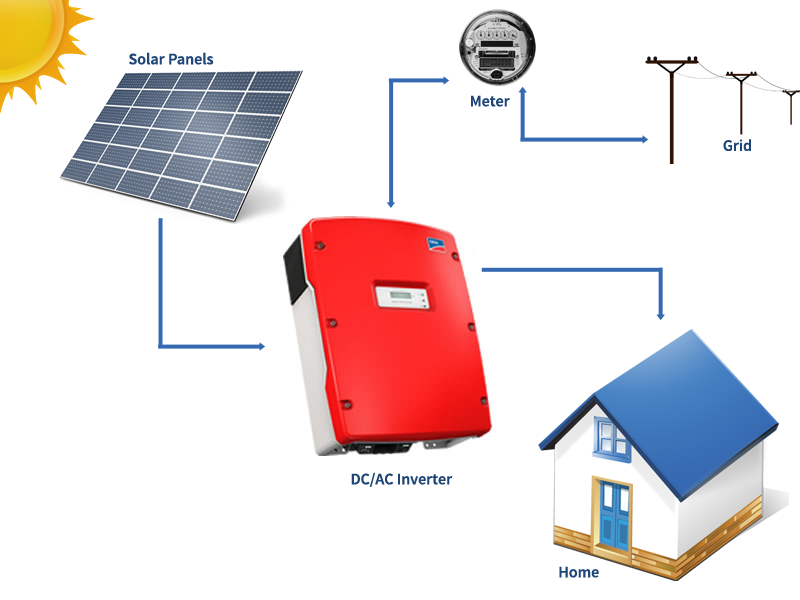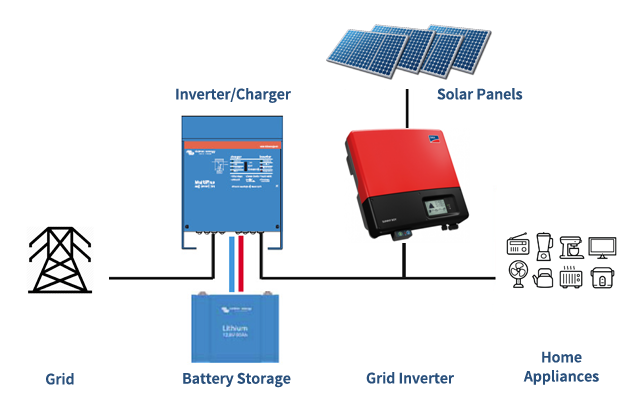There are three types of solar power systems.
- Grid connected systems
- Off grid systems
- Hybrid systems or grid connected system with a battery backup
Many people are confused about the different types of solar power installations that you can have installed at your home or business. The three types are as follows: Grid Connected, Off-Grid and Grid Connected With Battery Backup, also known as a Hybrid System.
Grid Connected Solar Power Systems
Grid connected systems are also known as grid tied solar systems and as its name suggests, you are always connected to the electricity grid. Should the grid go down, so does your power supply. You do not have any batteries to charge with a grid connected solar power system and any excess power you generate that is not used to power your home is sold back to the electricity supplier. The vast majority of domestic solar power installations in Australia are grid connected systems.
Off Grid Solar Power Systems
Off grid solar power systems are also known as stand alone systems and again, as suggested by its name, you are not connected to the electricity grid at all. This is also known as islanding. Your solar PV system will normally have a bank of batteries which are charged by the solar panels. The system takes power from the batteries, inverts it to 230VAC mains power, and this power is used to power your home. Should your solar system generate more power than you can use or what is required to charge the batteries, this power is wasted as it is not connected to a grid to feed back surplus power. Off Grid installations are popular if you are a located long distances power line or in remote rural areas. Off grid systems can also be supplemented by a power generator (such as a diesel electricity generator) when there is not enough sun (such as when it rains for days) to power the system or charge the batteries.
Grid Connected With Battery Backup
Grid connected with battery backup, these are also known as hybrid systems and are a mix of the two above systems. You remain connected to the grid but your solar panels generate enough power to run your home and to charge batteries. If the grid goes down (in a blackout situation), your system will switch over and you will have power even if everyone else is in darkness! If you generate more than you can use in the home or to charge your batteries, this excess power will be fed back in to the electricity grid and you receive a credit in your bill for this. It is sold to the utility company via a feed in tariff.
Our home page has an overview of solar power, how it works and the benefits of solar power in you home or business. Click here to view this information.



